Otoplasty in Argentina
Search and Compare the Best Clinics and Doctors at the Lowest Prices for Otoplasty in Argentina

Find the best clinics for Otoplasty in Argentina
No pricing info available
Egypt offers the best prices Worldwide
Price: $ 100
From 35 verified reviews
Fabiana Lista, 30 August 2020
HELLO I HAVE BEEN TAKING CARE WITH MARCELO ROBLES FOR 3 YEARS AND MORE THAN EXCELLENT. THE ROBLES CLINIC HAS NOT ONLY AN EXCELLENT HOSPITALITY A SURGERY OF HIGH LEVEL ABSOLUTE AND IMMEDIATE RESPONSE TO ANY DOUBT THEY HAVE ANSWERED !!!!!!!!!! !!!!!, I WAS NEVER INFECTED A POINT I DID A MASTOPLATIA, DERMOLIPECTOMY AND EVERYTHING WITHOUT ANY CONSEQUENCE ....... MORE THAN WORDS OF EXCELLENT RESULTSPLASMA RICH IN IMPECCABLE PLAKETAS AND IN OPERATING ROOM HYGIENE 100% RESULTS MORE Q CONFORMINGCONGRATULATIONS TO DR ROBLES FOR HIS PROFESSIONALISM AND IMMEDIATE RESPONSE RESPONSIBILITY ...SOMETIMES THE BLASPHEMATIC PEOPLE ..... WITH SOME PURPOSE.
Aesthetic Up, located in Caballito, Buenos Aires, Argentina offers patients Otoplasty procedures among its total of 48 available procedures, across 4 different specialties. Currently, there's no pricing information for Otoplasty procedures at Aesthetic Up, as all prices are available on request only. All procedures and treatments are undertaken by just a small team of specialists, with 2 in total at the Clinic, and they have multiple recognized accreditations, including: ASPS - American Society of Plastic SurgeonsASAPS - Australasian Society of Aesthetic Plastic Surgery
- Home
- Argentina
Compare Before & After Photos of _procedure_photos.phpOtoplasty
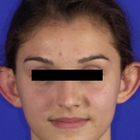
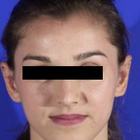
Front view
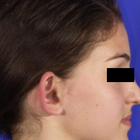
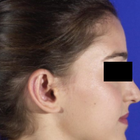
Full-side view
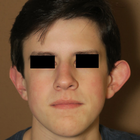

Front view

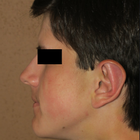
Full-side view
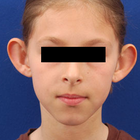
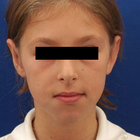
Front view
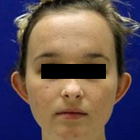
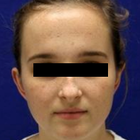
Front view
WHY US?
At Medijump, we're making medical easy. You can search, compare, discuss, and book your medical all in one place. We open the door to the best medical providers worldwide, saving you time and energy along the way, and it's all for FREE, no hidden fees, and no price markups guaranteed. So what are you waiting for?

Free

Best Price

Widest Selection

Risk-Free
What you need to know about Otoplasty in Argentina

Otoplasty, also referred to as cosmetic ear surgery, is a type of cosmetic procedure to change the size, shape, or position of the ear. It is performed on the visible part of the outer ear, called auricle. Some people choose to have the surgery to correct odd-shaped ears due to an injury or birth defect. Others have it because they are concerned with how their ears protrude too far from their head. Otoplasty can be performed at any age after the ears have reached their full size, generally after age 5. In some cases, the surgery may be done as early as age 3.
There are several types of otoplasty. The following are the most common:
- Ear pinning draws the ears closer to the head. It is usually done on people whose ears stick out too far from their head.
- Ear augmentation is ideal for individuals whose ears are small or have not completely developed. This type of otoplasty can increase the size of the outer ear.
- Ear reduction is usually done on people with macrotia, which is a condition when the ears are larger than normal. Otoplasty can reduce the size of the ears.
What does a Otoplasty Procedure Involve?
Otoplasty is typically carried out under local anesthesia with a sedative, so you will be awake but you will not feel any pain. In some cases, general anesthesia may be used, typically for younger children.
The techniques used by your surgeon vary based on the type of otoplasty you are having. In general, your surgeon makes an incision either within the inner creases of your ears or on the backs of your ears. Then, your surgeon manipulates the tissue of the ear, which may include removal of cartilage or skin, grafting of cartilage to the ear, or folding and shaping of cartilage using permanent stitches. Once your surgeon is done correcting the shape, size, and position of your ears, the incisions are closed with stitches.
How Long Should I Stay in Argentina for a Otoplasty Procedure?
Otoplasty can take between 1 and 3 hours to perform, depending on the complexity and the specifics of the procedure. It is typically done as an outpatient procedure, which means you can leave the hospital on the same day. It is recommended that you stay in Argentina for 7 more days for follow-up checkups and removal of stitches.
What's the Recovery Time for Otoplasty Procedures in Argentina?
The recovery period may vary from one person to another. You may experience numbness for several weeks, and mild bruising for about 2 weeks. For several months, your ears may feel stiff and sore.
You should be able to go back to work and resume your normal activities, including exercise, within one to two weeks after surgery. Physical contact sports, such as rugby, football, or judo, should be avoided for at least 3 months. You should also avoid swimming for up to 8 weeks following your otoplasty.
What sort of Aftercare is Required for Otoplasty Procedures in Argentina?
Your surgeon will provide post-operative instructions. Make sure to follow the instructions carefully to promote smooth and quick recovery. You should rest with your head elevated on 2-3 pillows to minimize swelling. It is recommended that you eat a light, soft, and cool diet for several days. Take pain medication as prescribed by your doctor. Avoid sleeping on your side or rub the incisions to keep pressure off your ears. Consider wearing shirts with loose-fitting collars or button-down shirts.
What's the Success Rate of Otoplasty Procedures in Argentina?
Otoplasty is a safe and effective procedure, with high satisfaction rates. More than 90% of people who had the procedure claimed to be extremely happy with the results. Note that it may take some time for the result to be fully visible.
While it is a safe procedure, you still need to be aware of possible risks and complications that otoplasty carries. These include bleeding, hematoma formation, infection of the skin, infection of the cartilage of the ear, permanent or temporary numbness around the affected area, scar or keloid formation, unfavorable results, prolonged pain, narrowing of the external ear canal, impaired healing, changes in skin sensation, asymmetry, and overcorrection.
Are there Alternatives to Otoplasty Procedures in Argentina?
There are not many viable alternatives to otoplasty as of yet. One of the most popular alternatives is nonsurgical otoplasty, which does not require any incisions. The procedure uses special sutures to pin the ears back and achieve a more symmetrical look. These sutures are woven into the ears and will remain in place permanently. They are also virtually invisible, so the results will look natural.
For babies under three months old with prominent ears, ear-molds can be taped to their ears to reshape the ears without surgery. This type of treatment typically takes about six to eight weeks.
What Should You Expect Before and After the Procedure
Before otoplasty, you may have prominent or large ears or other deformity caused by an injury or birth defect that bothers you. Some people also feel self-conscious and embarrassed by the shape, size, and position of their ears. After the procedure, your ears will be corrected. Small or underdeveloped ears will be augmented to increase the size, the size of large ears will be reduced, and prominent ears will be drawn closer to the head. Your appearance will improve and you may feel more confident.
Whilst the information presented here has been accurately sourced and verified by a medical professional for its accuracy, it is still advised to consult with your doctor before pursuing a medical treatment at one of the listed medical providers
No Time?
Tell us what you're looking for and we'll reachout to the top clinics all at once
Enquire Now

Popular Procedures in Argentina
Prices Start From $28

Prices Start From $1,945

Prices Start From $120

Prices Start From $275

Recommended Medical Centers in Argentina for Otoplasty

- Interpreter services
- Translation service
- Religious facilities
- Medical records transfer
- Medical travel insurance
- Health insurance coordination
- TV in the room
- Safe in the room
- Phone in the room
- Private rooms for patients available

- Interpreter services
- Translation service
- Religious facilities
- Medical records transfer
- Medical travel insurance
- Health insurance coordination
- TV in the room
- Safe in the room
- Phone in the room
- Private rooms for patients available

- Interpreter services
- Translation service
- Religious facilities
- Medical records transfer
- Medical travel insurance
- Health insurance coordination
- TV in the room
- Safe in the room
- Phone in the room
- Private rooms for patients available

- Interpreter services
- Translation service
- Religious facilities
- Medical records transfer
- Medical travel insurance
- Health insurance coordination
- TV in the room
- Safe in the room
- Phone in the room
- Private rooms for patients available
Otoplasty in and around Argentina
Introduction
Argentina is beautiful and intriguing, the country’s cultural diversity, coupled with its beautiful nature, ensures a wide-ranging natural and cultural experience for tourists. Today, Argentina is emerging as one of the most important destinations in the world for medical tourism. Today, you will find highly-experienced healthcare professionals, medical centers with cutting-edge technology, personalized patient care, and high-quality services. The majority of medical tourists in this country arrive from Latin American countries, the USA, and Canada. These medical tourists travel to Argentina to undergo dentistry, bariatric surgery, breast implants, and ophthalmology.
Popular Cities and Regions in Argentina
Known as the ‘Paris of South America,’ Buenos Aires is the capital and largest city in Argentina. It is known for its heavy European influence, which makes it diverse and vibrant. In this lively city, you will be welcomed with a dynamic food scene, magnificent architecture, colorful murals, lively nightlife, and glamorous tango. One of the most popular places in Argentina, besides Buenos Aires, in Córdoba, which is a fascinating city with a blend of old and new. In this city, you can find DJs spinning electro-tango next to 17th century Jesuit ruins. Another famous tourist destination is Mendoza. Filled with atmospheric plazas, leady avenues, and cosmopolitan cafes, this city captivates its tourists by its laid-back vibe. Those looking to relax on a beach should definitely visit Mar del Plata or Pinamar, where you can soak up some sun and have a lot of fun.
Transport in Argentina
Ezeiza International Airport is the largest airport in Argentina, located in Greater Buenos Aires. It connects the country with almost every country in the world, such as the US, Mexico, France, the UK, and the UAE. Since Argentina is very large, traveling around the country is easier with domestic flights. However, buses are popular among those who want to appreciate the country’s landscape. The best way to travel inside cities is by renting a car.
Visas in Argentina
Citizens of several countries, including Brazil, Ecuador, and the US, can visit and stay in Argentina without a visa for up to 90 days. Most other nationalities need to apply and obtain a visa to enter the country.
Weather in Argentina
Given the immense size of the country, the weather varies widely from one region to another. Buenos Aires tends to be hot from December to March, but it is very pleasant to visit between July and August. The south of Argentina is nice to visit from December to March, while July and August tend to be very cold. North Argentina has three climate zones and areas around the Iguazu Falls are generally tropical with humid weather.
Additional Info
- Local Currency: Argentine peso (ARS) is the official currency. 1 USD is equivalent to 62 ARS.
- Money & Payments: You can find ATMs in nearly every city in Argentina. Most hotels, restaurants, and stores in major cities accept credit cards (Visa and MasterCard).
- Local Language: Spanish is the main language in the country. English is also widely spoken as it is obligatory in primary school.
- Local Culture and Religion: Argentina is an overwhelmingly Christian country. Only a small percentage of the population practices other religions, such as Buddhism, Hinduism, Islam, and Judaism.
- Public holidays: Public holidays in Argentina usually include Catholic based holidays, such as Christmas, although other religious holidays such as the Islamic New Year is celebrated. The country also celebrates historic holidays, such as Independence Day.
Popular Searches
- Plastic Surgery in Thailand
- Dental Implants in Thailand
- Hair Transplant in Thailand
- Breast Augmentation Thailand
- Gastric Sleeve in Thailand
- Gender Reassignment Surgery in Thailand
- Laser Hair Removal in Bangkok
- Botox in Bangkok
- Dermatology in Bangkok
- Breast Augmentation in Bangkok
- Coolsculpting in Bangkok
- Veneers in Turkey
- Hair Transplant in Turkey
- Rhinoplasty in Turkey
- Stem Cell Therapy in Mexico
- Rhinoplasty in Mexico
- Liposuction in Mexico
- Coolsculpting in Tijuana
- Rhinoplasty in Korea
- Scar Removal in Korea
- Gastric Sleeve in Turkey
- Bone Marrow Transplant in India
- Invisalign in Malaysia
- Plastic Surgery in the Dominican Republic
- Tummy Tuck in the Dominican Republic
- Plastic and Cosmetic Surgery in Poland
- Rhinoplasty in Poland
- Hair Implant in Poland
- Dental Implants in Poland
- IVF in Turkey
